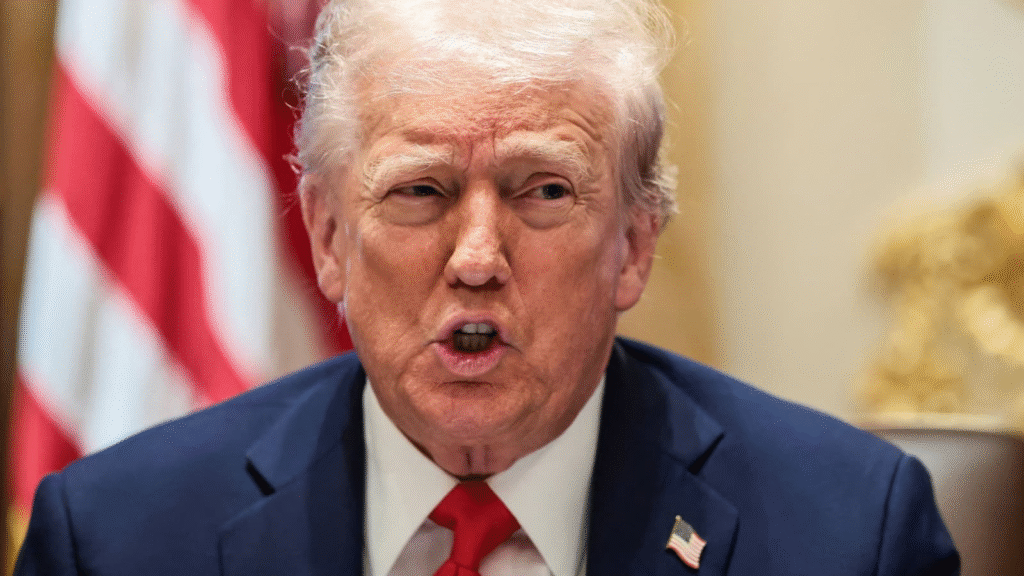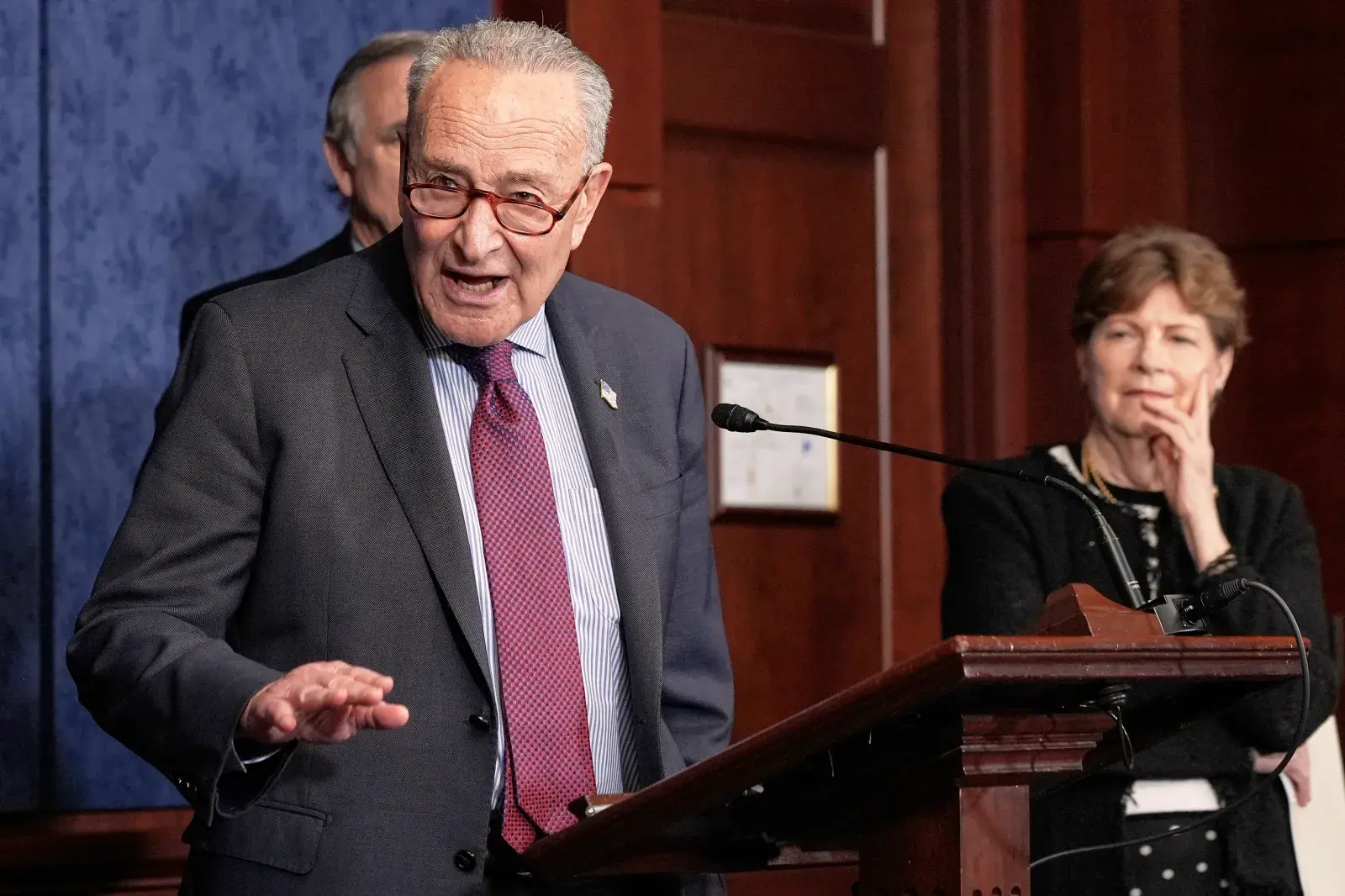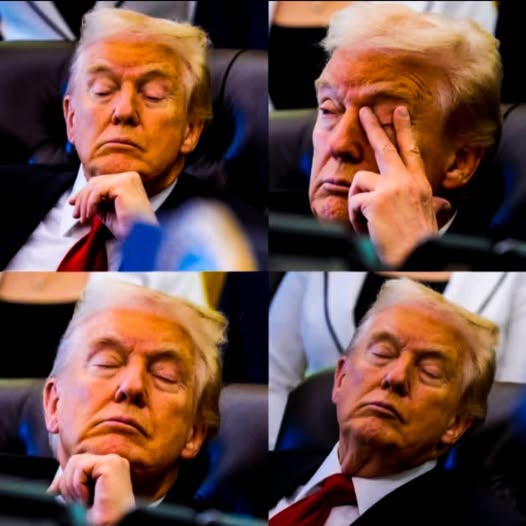President Trump Announces Permanent Cuts to Democrat Programs Including Schumer Backed Billion Dollar Project
President Donald Trump made a stunning announcement that sent shockwaves through Washington on Monday, declaring that his administration will move forward with sweeping, permanent cuts to several Democrat-backed programs.
Speaking candidly in an interview, Trump revealed that the decision stems from what he described as a “mistake” by Democrats during ongoing political negotiations.
The president claimed that the misstep effectively granted him authority to eliminate programs that Republicans had long opposed, including a major $20 billion project championed by Senator Chuck Schumer for more than fifteen years.
During the exchange, Trump was direct and unapologetic about the scale of the cuts, portraying them as both a political correction and a long-overdue act of fiscal discipline.
“We’re cutting Democrat programs that we didn’t want because, I mean, they made one mistake,” he said.
“They didn’t realize that that gives me the right to cut programs that Republicans never wanted — giveaways, welfare programs, et cetera. And we’re doing that, and we’re cutting them permanently.
”The president then delivered the most pointed line of the conversation: “We’re cutting a $20 billion project that Schumer fought for 15 years to get, and I’m cutting the project. The project is going to be dead. It is pretty much dead right now.” The declaration immediately set off waves of speculation and concern across political circles.
Trump’s words suggested that the administration is not simply pursuing temporary budget adjustments or short-term suspensions but instead seeking to permanently dismantle funding streams linked to Democratic priorities.
The bluntness of his remarks underscored the widening rift between the White House and Democratic leaders, particularly Schumer, who has long been a prominent voice in defending federal social and infrastructure programs.
His statement also reflected a confident tone that made it clear this was not a negotiation tactic but a final decision he was ready to defend.
Interviewer Maria pressed the president on the potential economic consequences of such sweeping program cuts, including layoffs that could follow in affected sectors.
“Well, how significant will the layoffs be?” she asked, highlighting both the social and legal implications of such actions.
“Because now you’ve got a federal judge trying to stop you there as well, saying that any layoffs during a temporary shutdown is illegal.
”Trump did not back down. Instead, he doubled down on his criticism of the judiciary and the broader system of oversight that has attempted to limit executive decisions.
“These judges, I’m telling you, it’s so terrible,” he said with frustration. His tone conveyed a deep sense of irritation at what he viewed as constant interference from the courts, interference he believes is slowing down what he considers necessary government reforms.
That exchange exposed a deeper tension underlying the administration’s approach: the collision between executive authority and judicial review.
Trump’s dismissal of the court’s potential intervention signaled a willingness to proceed with cuts regardless of legal pushback, framing the judiciary as an obstacle rather than a safeguard.
His comments once again echoed a familiar theme of his leadership style — governing through confrontation and portraying himself as the decisive figure standing against institutional resistance.
While Trump did not specify which programs beyond the Schumer-backed project would be affected, his characterization of them as “giveaways” and “welfare programs” made clear that the cuts target initiatives aligned with Democratic social and economic policies.
To supporters, this represents a bold move to rebalance federal spending priorities and remove what they see as wasteful expenditures.
To critics, however, it is a direct attack on working-class communities and a calculated act of political retribution.
The timing of the announcement was equally significant. Coming amid a tense atmosphere of government shutdown threats and partisan gridlock, Trump’s statement appeared to leverage the Democrats’ internal missteps as a justification for sweeping executive actions.
By describing the situation as a “mistake” that “gives me the right to cut programs,” the president effectively portrayed himself as seizing an opportunity created by his opponents’ procedural or strategic error.
Throughout the interview, Trump’s tone was one of controlled confidence mixed with a sense of vindication.
His phrasing — “we’re doing that, and we’re cutting them permanently” — left little room for ambiguity.
It was a definitive statement, not a tentative policy trial balloon. By calling out Schumer by name, Trump personalized the conflict, transforming a policy debate into a direct confrontation between political rivals.
The mention of the 15-year struggle for the $20 billion project served as both a jab and a statement of triumph, framing the cut as a symbolic reversal of long-standing Democratic ambitions.
This deliberate framing suggests the president sought to reinforce his political brand as a disruptor — one who dismantles what he sees as decades of bureaucratic excess and partisan entitlement.
The language of “giveaways” and “welfare” further appealed to fiscal conservatives and anti-establishment voters who believe the federal government has expanded too far into economic life.
However, the promise of permanent cuts raises questions about the downstream effects on communities, industries, and workers tied to those programs.
While Trump brushed aside concerns of layoffs, his interviewer’s question pointed to a growing unease about the human cost of abrupt budgetary decisions, especially amid judicial scrutiny of the legality of such layoffs during periods of government shutdown.
Trump’s dismissal of judicial opposition — “These judges, I’m telling you, it’s so terrible” — captured the essence of his ongoing tension with the courts.
Over the years, the judiciary has frequently served as a check on executive actions involving budget reallocation, environmental rollbacks, and administrative spending.
Here, his words implied a broader frustration with what he views as politically motivated legal challenges designed to slow his administration’s agenda.
Carrying out permanent cuts of this magnitude would require a complex set of legal and procedural steps.
Federal programs — particularly those involving multi-year funding and congressional appropriations — cannot typically be eliminated by executive declaration alone.
However, Trump’s rhetoric suggested an intention to use every available executive tool to achieve his desired outcome, potentially including the reallocation or withholding of discretionary funds.
His critics are likely to argue that the president’s statements overstep constitutional boundaries, reflecting an attempt to legislate through executive fiat.
Supporters, on the other hand, interpret his comments as a necessary assertion of presidential authority to align spending with what they see as the country’s best interests.
The announcement inevitably sparked concern about the broader economic implications.If implemented as described, the termination of multibillion-dollar projects could affect thousands of workers and contractors tied to the programs.

It could also disrupt local economies that have become reliant on federal funding streams for infrastructure, welfare, and community development.
Trump, however, showed little concern for such projections. To him, the core issue appeared to be ideological rather than economic.The president’s framing emphasized eliminating what he considers wasteful Democratic spending, rather than managing potential short-term fallout.
This sharp distinction reveals a key philosophical divide: where opponents see public investment, Trump sees political patronage; where others see social programs, he sees inefficiency.His declaration that these cuts are permanent further reinforces the idea that he views this as a decisive break from previous fiscal policy, not a temporary correction.
The inclusion of Senator Schumer’s name was no accident. For years, Schumer has represented the face of Democratic opposition in Congress, often clashing with Trump over spending, immigration, and judicial appointments.
By singling him out and tying his name to a specific $20 billion project, Trump cast the announcement as a personal victory as much as a policy one.
“The project is going to be dead,” he said, his tone final and unwavering. That stark statement resonated as more than mere budgetary talk.
It was political theater, designed to assert dominance over a long-standing rival and to demonstrate control over the federal purse.
To his base, such defiance reinforces his image as a leader who takes decisive action against entrenched political figures.To critics, it appears as punitive governance — cutting programs not based on merit or efficiency but as a form of political retaliation.
The exchange with Maria captured the Trump presidency’s enduring themes: confrontation, defiance, and a willingness to challenge institutional limits.
His offhand dismissal of judicial checks echoed his broader skepticism of traditional constraints on executive power.
At its core, the moment underscored Trump’s strategy of framing governance as combat — every policy a battlefield, every opponent a target, every setback an opportunity to strike back.
Whether these proposed cuts will survive legal, administrative, or political challenges remains to be seen, but one thing is certain: Trump has once again positioned himself at the center of controversy, wielding his words as both weapon and shield.
In just a few minutes of conversation, President Trump redefined the contours of a budget debate into a sweeping statement of political intent.
His declaration to “cut them permanently,” referring to programs Democrats fought to create and sustain, drew a sharp line between two visions of governmenOn one side, a president intent on dismantling what he sees as wasteful bureaucracy; on the other, a coalition of lawmakers, judges, and citizens bracing for the impact of those decisions. “The project is going to be dead,” Trump said.

In those six words lay both the promise and peril of his presidency: the determination to act decisively, even if it means tearing down what others spent years to build.



